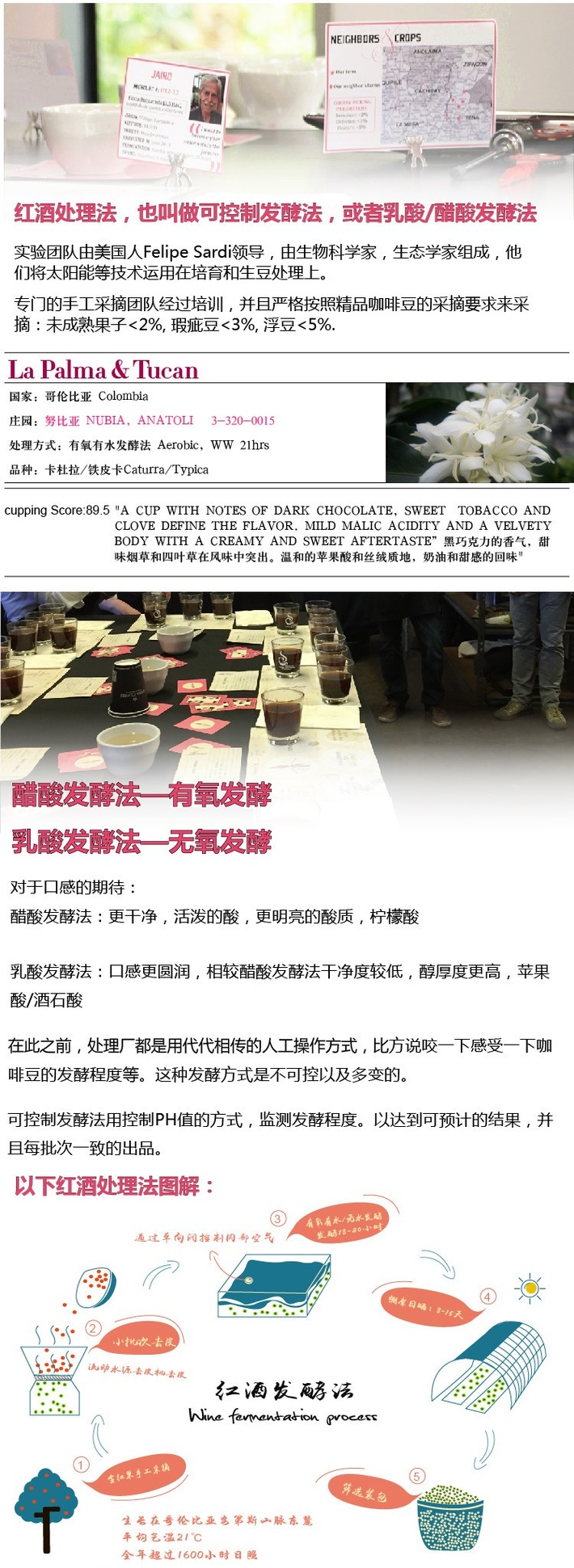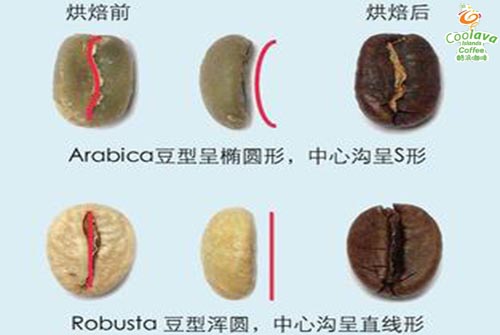Fine coffee beans: two production methods of coffee beans and how to choose coffee beans

After harvest, peel, pulp, racing peel and silver peel should be removed before shipping and listing. There are two kinds of methods: drying (also known as natural or non-washing) and washing.
Dry type:
The method is relatively simple. First of all, spread the freshly harvested fruit on the sun field for a week or two until the fruit crackles and dries naturally. After that, the dried pulp, endocarp and silver peel are removed by a sheller.
Coffee beans refined in this way are slightly sour and slightly bitter. Almost all coffee beans produced in Brazil, Ethiopia, Yemen and other places are obtained in this way. The disadvantage of this method is that it is easily affected by the weather and is easy to be mixed with defective beans and other impurities. Therefore, it must be carefully screened.

Washing type:
The fruit that is about to be harvested is put into a flowing trough. After the floating fruit is removed, the skin and flesh are removed by a pulp remover. Then put it in the sink to remove the emerging pulp. After that, move into the fermentation tank, soak for half a day to a day, and then dissolve the gum on the surface of the fermented coffee beans.
After washing with water, drying it for a few days, drying it with a machine, and finally using a sheller to remove the endocarp to become a commercial raw coffee bean. In this way, it will be more beautiful in color and less impurity than dried coffee beans. Colombia, Mexico, Guatemala and other countries use this method for about 70% of their production.

How to choose coffee beans:
Choose fresh coffee beans. When buying, pay attention to whether the color of the beans and the size of the particles are the same. Good coffee beans are shiny and have a strong aroma without being mixed with peculiar smell. No matter what kind of coffee beans, freshness is an important factor affecting the quality. When shopping, grab one or two coffee beans in your mouth and chew them with a crisp sound (indicating that the coffee is not damp) and the fragrance of the teeth and cheeks is the top grade, but it is best to squeeze it with your hands to feel whether it is solid, rather than buying crispy coffee. If the coffee bean has lost its fragrance or smells stale, it means that the coffee bean is no longer fresh and is not suitable for purchase.
Freshly fried coffee beans are not suitable for immediate consumption and should be stored for a week to completely release the gas from the beans.
Generally speaking, the best drinking period for coffee is a week after stir-frying, when the coffee beans are the freshest and the Aroma taste is the best.
In addition, the purity of coffee beans is also another consideration. The expert candidate for coffee is not necessarily to look at the size of the particles, but to grab a handful of individual coffee beans (Regional Coffee), about dozens of portions, to see whether the color of each single bean is the same, and whether the particles are similar in size and shape, so as to avoid buying shoddy products disguised as mixed beans. But if it is a synthetic bean (Blended Coffee), it is a normal phenomenon that the size and color are different. In addition, heavy heat and medium-deep roasting will cause coffee beans to produce oil, but if the lightly roasted beans produce oil, they have gone bad, not only reducing aroma, but also astringent and sour taste. In short, when buying coffee, we should pay attention to its freshness, aroma and whether it is stale or not, and the ideal purchase quantity is to be able to drink it in half a month.
Judgment of appearance:
Delicious coffee, from the shape of its roasted coffee beans can be known, of course, can not be mixed with bad coffee beans, it is more important to note that normal beans will also be mixed with high-quality coffee beans. A fried roasted bean that can brew delicious coffee must first be big and fat, and crepe evenly, followed by the same size and colorless and spotless. These are the main points of visual discrimination, and if you look at them carefully, it should not be difficult to separate them.
Kinds of bad beans:
Fermented coffee beans that fall from the soil before harvest. The moldy smell will have a great impact on the taste of coffee.
Dead beans, also known as unripe beans, or affected by the climate due to red, the development is not perfect. Fried spots will be produced after baking, making the coffee have a green and astringent taste.
Black beans fermented beans, coffee beans that have rotted and blackened. Because it is black, it can be distinguished from normal coffee beans at a glance.
Moth beans Coffee beans infested by insects. Defective beans may be stuck during work, or carelessly handled during handling, resulting in incomplete coffee beans. Will cause fried spots when baking, and will produce bitter and astringent taste.
Other remaining thin-skinned beans, stunted beans, dried beans that do not completely produce moldy flavor, only shell beans (shell beans)

Specifications and grades of coffee beans:
A, washing type / non-washing type
Washing type:
In the sink, after rubbing with water and utensils, the pulp and gum are removed and dried, which is called water-washed coffee beans with uniform quality.
Non-washing type:
After the sun is naturally dried, the pulp and peel is removed by a sheller, and its quality is unstable.
B, flat beans / round beans
The fruit of coffee consists of two oval seeds opposite each other. The connecting side of each other is a flat joint, which is called flat bean. But there is also a round seed called a round bean, which tastes no different. Ripe and red coffee cherries have multiple structures. In the middle is the predecessor of the coffee bean, the light green seed.
Generally speaking, the fruit of coffee is made up of two oval seeds opposite each other. The side that connects with each other is a flat joint, so it is called flat bean. But some are made up of a round seed, and its taste is no different.
C, the size of coffee beans
Filter number (meshno.) Coffee bean size
Pingdou 20-19 extra-large 18 large 17 quasi-big 16 ordinary 15 medium 14 small 1312 extra-small
Coffee beans
The round bean is 13, 12, 11, 10, 9, 8, 8, 4, 9, 8, 4, 4, 4, 4, 4, 4, 4, 4, 4, 4, 4, 4, 4, 4, 4, 4, 4, 4, 4, 4, 4 and 8
D, altitude
According to the elevation of the cultivated land, it can be divided into three, four, seven and other grades. Generally speaking, the quality of highland beans is better than that of lowland beans, and the price is higher because of the increase in freight.
Grade name elevation (m)
1 high-grade beans 1.500 ~ 2 good beans 1.200 ~ 1.500 ~ 3 medium beans 1.000 ~ 1.200 4 special water washed beans 900 ~ 1.000
Coffee beans
5Superior water washed beans 760,900 6 special water washed beans 6100.760 7 superior water washed beans ~ 610
E, quality
According to the statistical method, the type and quantity of dopants contained in a certain amount of samples are converted into percentage "defect number", and the basis for determining the quality class is that the smaller the defect number is, the higher the quality is.
F, taste
The more famous ones are the unique "Blue Mountain Coffee" and the "Cubita" known as "unique Caribbean flavor coffee" and so on. Brazil, Haiti, Kenya, say and other countries also have their own taste testing methods, which can be exported only after taste testing.

Article source: Internet
Important Notice :
前街咖啡 FrontStreet Coffee has moved to new addredd:
FrontStreet Coffee Address: 315,Donghua East Road,GuangZhou
Tel:020 38364473
- Prev

Panama Hartmann border sunburn, honey treatment Lalida, Colombia red wine treatment
Country: Panama Manor: Hartmann La Frontera Treatment: Sunlight Natural Variety: Gesha Cup Flavor: 92 (Floral,sweetorange,pineapple,honey,vanilla,livelyaromas. Floral, sweet orange, pineapple, vanilla, lively fragrance) Panama famous production area, many competitors for competition
- Next

Boutique coffee beans: details of Arabica and the difference between Arabica and Robusta
Arabica Coffee Coffee Arabica many people have seen roasted coffee beans, but unless you have lived or traveled to coffee producing areas, you may not know coffee trees. The saplings are short-trimmed, but when they mature, they are 30 feet tall and covered with waxy leaves that grow symmetrically in dark green. The coffee fruit grows along the branches. After the white flowers are in full bloom and pollinated, the fruit takes a year to ripen.
Related
- Guji coffee producing area of Guji, Ethiopia: Humbela, Shakiso, Wulaga
- What is the most expensive variety of Qiloso in BOP multi-variety group?
- How to store the coffee beans bought home?
- Why are Yemeni coffee beans so rare now?
- Ethiopian Sidamo all Red Fruit Sun Sun Santa Vini Coffee beans
- SOE is mostly sour? What does it mean? Is it a single bean? what's the difference between it and Italian blending?
- Is Italian coffee beans suitable for making hand-brewed coffee?
- How to choose coffee beans when making cold coffee? What kind of coffee beans are suitable for making cold coffee?
- Just entered the pit to make coffee, what kind of coffee beans should be chosen?
- Can only Japan buy real Blue Mountain Coffee? What are authentic Jamaican Blue Mountain coffee beans?

